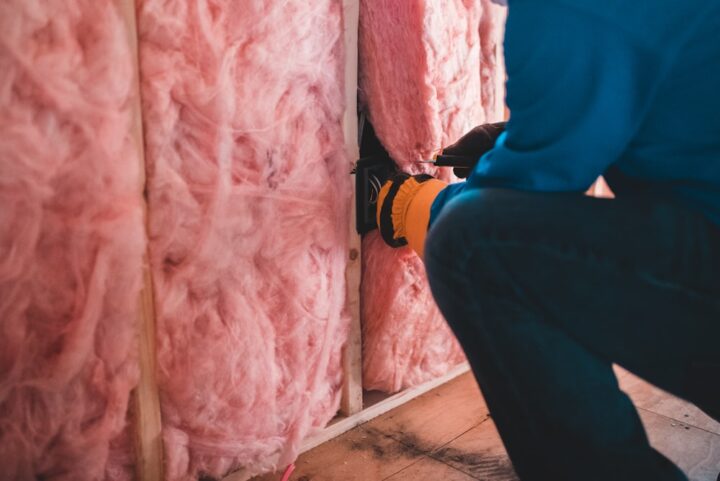Key Areas of Your Home That Need Insulation
Insulating your home is a crucial step in enhancing its energy efficiency, comfort, and overall livability. Here, we explore seven key areas that need insulation and discuss why each is important.

1. Attic
Attic insulation is essential for maintaining a comfortable home temperature year-round. It prevents heat from escaping in the winter and blocks hot air from entering in the summer. This dual action helps reduce your heating and cooling costs significantly.
Additionally, attic insulation can improve indoor air quality by blocking potential allergens and pollutants from entering your home. Your local insulation experts should be able to install attic insulation for your home. Properly insulating your attic can also prevent ice dams on your roof during winter months.
2. Ducts
Duct insulation is vital for maintaining the efficiency of your heating and cooling system. It can lower your utility bills by up to 30%, saving you money in the long run. Insulated ducts reduce the workload on your HVAC system, prolonging its lifespan.
They also improve indoor air quality and comfort by ensuring that air travels at the right temperature throughout your home. Furthermore, it prevents energy waste in unconditioned spaces like attics or crawl spaces.
3. Floors
Floor insulation contributes to a more stable temperature throughout your home, reducing cold and hot spots. It cuts off many draught access points, reducing condensation and mold growth. This type of insulation also diminishes external noise, making your living spaces quieter.
Moreover, it’s a key factor in achieving year-round comfort and energy efficiency. Insulating floors, especially above unheated garages, can prevent heat loss and increase warmth underfoot.
4. Walls
Wall insulation is crucial for reducing electricity bills by limiting the costs of heating and cooling your home. It provides year-round comfort by creating a barrier that keeps indoor temperatures consistent, regardless of the season.
It also helps prevent condensation and mold growth, contributing to a healthier living environment. Once installed, it requires no maintenance and lasts a lifetime. It also adds to the soundproofing of your home, keeping external noise at bay.
5. Crawl Space
Insulating your crawl space prevents cold floors and reduces the risk of frozen pipes in winter. It also blocks moisture that can lead to mold and wood rot, protecting the structural integrity of your home.
Crawl space insulation can deter pests and improve overall air quality by preventing ground moisture and cold air from entering your living spaces. Additionally, it can make your home more attractive to potential buyers by ensuring it is well-maintained and energy-efficient.
6. Rim Joists
Rim joist insulation seals off a major source of air leaks where the house meets the foundation. This can significantly reduce drafts and energy loss, leading to lower heating and cooling costs. Insulating rim joists also prevents moisture and cold air ingress, which can cause mold growth and structural damage over time. It’s a small investment that can yield big returns in energy savings and home comfort.
7. Foundation Walls
Foundation wall insulation helps maintain a more consistent temperature in your basement or crawl space, contributing to overall home comfort. It reduces the risk of freezing pipes and damp conditions that can lead to mold and mildew.
Additionally, insulating foundation walls can improve your home’s energy efficiency, leading to savings on heating and cooling costs. This type of insulation can also protect against insect infestation and radon infiltration.
8. Garage
Garage insulation is often overlooked but can have a significant impact on your home’s energy efficiency. Insulating the garage prevents heat transfer between the garage and the living areas, which is especially important if you have rooms above or adjacent to the garage. It can also make your garage a more usable space year-round, keeping it warmer in winter and cooler in summer.
Furthermore, garage insulation can reduce noise transfer from the garage into the house, which is beneficial if you use power tools or other loud equipment. It also adds an extra layer of security by making it more difficult for heat and noise to escape, which can be a deterrent to potential intruders. Insulating your garage is a smart move that can improve the comfort, efficiency, and security of your home.
Conclusion
In conclusion, properly insulating these key areas of your home can lead to significant energy savings, increased comfort, and a healthier living environment.


